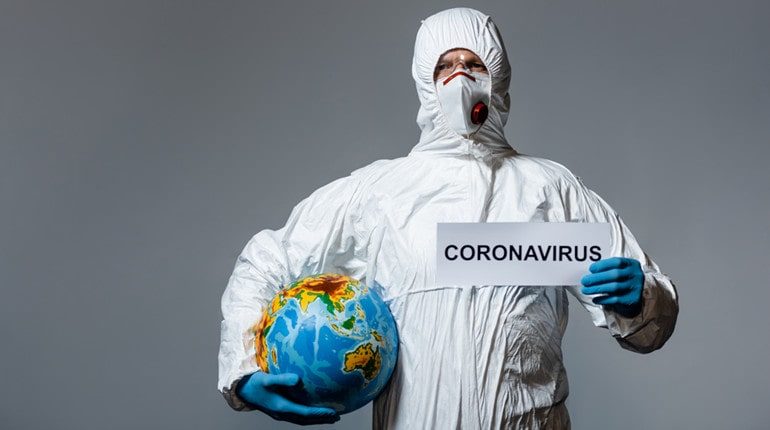As the fight against the coronavirus rages on, the worldwide casualties are slowly going down, and it’s only a matter of time before the virus is completely eradicated.
While this worldwide crisis has led to many problems, the health industry has unexpectedly seen improvements in its safety policies, procedures, and discipline. But, people tend to overlook the thing that has improved the most—medical personal protective equipment (PPE).
Except for the lower price of surgical masks and face shields, how exactly did medical PPE change? Here are a few improvements in medical PPE during the previous year.
1. Production Is Higher Than Ever
Even before the COVID-19 outbreak, products such as surgical masks and face shields were already quite popular with healthcare workers. However, since the beginning of 2020, there was an increase in demand for medical PPE, which pushed PPE manufacturers to increase production.
In response to the market demand, surgical masks and even medical garments such as scrubs by Keswi have become more accessible to medical workers. The industry is also seeing a lot of innovations in medical equipment, one of which is the powered air-purifying respirators (PAPR).
2. Introduction To PAPRs
Powered air-purifying respirators (PAPRs) are a new type of medical PPE. They’re basically an upgraded version of respirators (surgical masks and N95s) as they include eye, mouth, and nose protection.
The PAPRs are not any better than traditional respirators at the moment, but the potential is massive. Several innovators are looking to add several functions into these PAPRs, such as disinfection, cleaning, and better battery life so that you can look forward to this equipment.
While there’s no conclusive evidence that PAPRs are safer than typical respirators, they’re still the recommended medical PPE during high-risk procedures, such as when the operation involves a highly-suspected or confirmed COVID-19 patient.
One problem about PAPRs is that it seems to hinder the worker’s mobility due to its weight, but that’s something innovators are already addressing. After all, necessity is the mother of invention.
3. Lighter Respirators
Since the introduction of PAPRs to the health industry, they’ve become one of the must-have medical PPEs in healthcare facilities. However, it’s not very practical to wear this equipment unless there’s a significant operation due to its weight.
As such, PPE manufacturers are now looking into lighter PAPRs by using designs that provide better weight distribution in hopes of potentially preventing aches and strains during extended operations.
4. Use Of Sensors For PPE Compliance
Although healthcare workers are encouraged to practice safety by wearing medical PPE as much as possible, they’re still human—they can make mistakes. For instance, they can forget to wear the equipment or wear them incorrectly.
On the bright side, the health industry is looking to attach sensors to medical PPEs. These sensors are intended to notify or alarm the wearer or owner when they’re wearing the PPE incorrectly or when they’re not wearing it at all. It’s also possible for safety managers to use these sensors to ensure that their workers comply with their safety policies.
5. Antimicrobial And Antiviral Coating
Antimicrobial coating is a chemical agent that stops the growth of disease-causing microorganisms. While it doesn’t eliminate the coronavirus, health experts predict that this should, at least, add an extra layer of protection to medical PPEs. Although it’s been in the market for many years now, it only got to the spotlight now due to the coronavirus. The same can be said about antiviral coating.
Antiviral coating is similar to antimicrobial agents, except it kills the viral infection. So far, this substance tested very well against the coronavirus, so we should see an increase in antiviral-coated medical PPEs even after the current virus outbreak.
6. Comfort And Style
Millennials have always valued comfort and style, so veterans expect that these values would be carried over when millennials take over the healthcare workforce, even before the outbreak. So, when the outbreak began, it served as a catalyst to speed up this supposed prediction. Now, the health industry is seeing a lot of changes with the designs of medical PPEs.
Comfort and style are now major factors in the development of medical PPEs. It’s also likely that the fashion industry will take over the medical PPE designs as more healthcare workers look for ways to personalize their medical equipment and garments.
While it may drive people’s attention away from the element of safety, this has also led to many benefits. For instance, it has pushed PPE manufacturers to consider comfort and style during the development stages of their products, which may lead to the following features:
• Expanded horizontal and vertical field of vision
• Self-adjusting nose pads for comfort and fit
• Floating nose loops
• Wedge-shaped temples
7. Proper PPE Use
In the latter part of the virus outbreak, the health industry has seen much diversity in medical PPEs. Some are simple, but others are complex, which led to concerns with proper PPE use.
To be precise, people are no longer certain how to use specific medical equipment such as N95s and face shields. Although digital apps may help you learn how to wear or remove such equipment, it’s still a good idea to consult healthcare workers.
8. Changes in OSHA Standards
Every industrial worker knows about the Occupational Safety and Health Administration’s (OSHA) Fatal Four: (1) falls, (2) electrocution, (3) caught-in, and (4) struck-by. There are currently no changes with the Fatal Four, but the outbreak has brought the topic of “infections” into the equation, so there’ll likely be changes within OSHA standards.
When that happens, companies will be obliged to prepare countermeasures for possible sources of infections, and this will stay even after the virus outbreak has subsided.
Final Words
As tragic as it may be, this virus outbreak served as a wake-up call to humanity. And while the health industry still has a lot of room for improvements, it’s made a lot of progress during the short duration of one year. Hopefully, this momentum would continue even after this outbreak ends.



